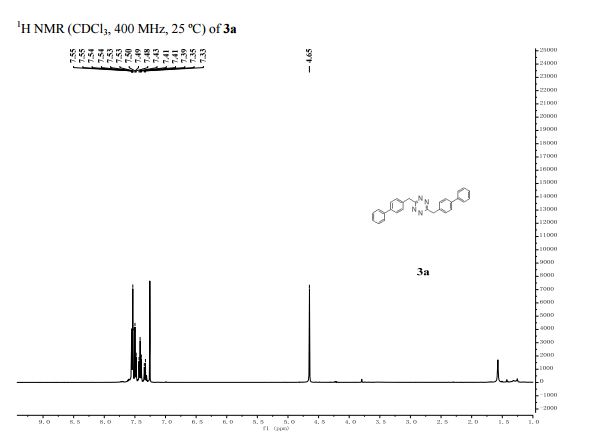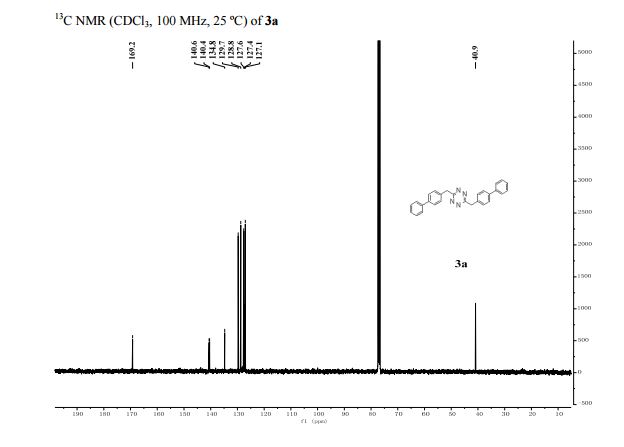
Green Chem., 2017, Advance Article
DOI: 10.1039/C6GC03494B, Paper
DOI: 10.1039/C6GC03494B, Paper
Zheng Fang, Wen-Li Hu, De-Yong Liu, Chu-Yi Yu, Xiang-Guo Hu
A procedure for the synthesis of tetrazines from gem-difluoroalkenes under aerobic conditions has been developed.
A procedure for the synthesis of tetrazines from gem-difluoroalkenes under aerobic conditions has been developed.
Synthesis of tetrazines from gem-difluoroalkenes under aerobic conditions at room temperature
*Corresponding authors
aNational Engineering Research Center for Carbohydrate Synthesis, Jiangxi Normal University, Nanchang 330022, P. R. China
E-mail: huxiangg@iccas.ac.cn
E-mail: huxiangg@iccas.ac.cn
bBeijing National Laboratory for Molecular Science (BNLMS), CAS Key Laboratory of Molecular Recognition and Function, Institute of Chemistry, Chinese Academy of Sciences, Beijing 100190, China
Green Chem., 2017, Advance Article
An efficient and green procedure for the synthesis of tetrazines has been developed based on an old chemistry reported by Carboni in 1958. Both symmetric and asymmetric 3,6-disubstituted 1,2,4,5-tetrazines can be obtained in moderate to high yields from the corresponding gem-difluoroalkenes under aerobic conditions at room temperature. This work represents a rare example that ambient air is utilized as an oxidant for the synthesis of tetrazines.
Synthesis of symmetric 3,6-dialkyl-1,2,4,5−tetrazine(3a−3h)
To a solution of 1,1−difluoroalkenes (1a, 50 mg, 0.27 mmol) in N,N-dimethylformide (DMF,5 mL) was added hydrazine (80%, 35 mg, 1.35 mmol). After stirring at room temperature for 4−6 hours, saturated ammonium chloride (20 mL) was added and the reaction mixture was extracted with dichloromethane (10 mL×3). The organic layer was combined, dried with anhydrous sodium sulfate. The solvent was concentrated and the crude product was dissolved in a suspension of Ethyl Acetate(5 mL) and 10% potassium carbonate solution(wt%, 5 mL) and stirred at room temperature for 24h under air atomerspere until the organic layer turned into amaranth obviously. The organic layer was collected, dried with anhydrous sodium sulfate. The crude product was purified by flash column chromatography[silica gel(#100–200), toluene] to afford the pure 1,2,4,5−tetrazines(3a−3h).
3,6−bis([1,1'−biphenyl]−4−ylmethyl)−1,2,4,5−tetra zine (3a).
(41 mg, 83%).
purple solid; m.p. 200−202°C;
IR(KBr) nmax/cm−1 2924, 2850, 1488, 1451, 1432, 1388, 851, 750;
1 H NMR (400 MHz, CDCl3) 7.55−7.33 (m, 18H), 4.65 (s, 4H).
13C NMR (100 MHz, CDCl3) δ 169.2, 140.6, 140.4, 134.8, 129.7, 128.8, 127.6, 127.4, 127.1, 40.9;
HRMS (ESI): calcd. for C28H22N4 [M+H]+ 415.19172, found 415.19124.


///////tetrazines, gem-difluoroalkenes, aerobic conditions, room temperature
